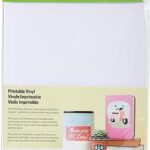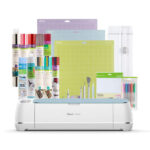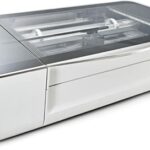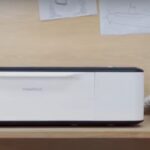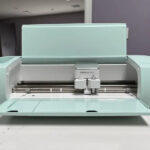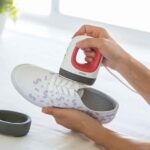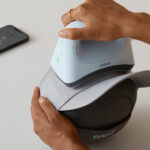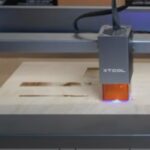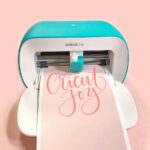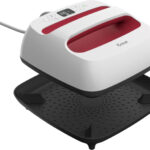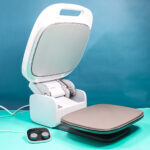Calibration is a crucial process in getting the best performance and accuracy out of your Cricut cutting machine. Proper calibration ensures that your machine cuts precisely, aligns designs correctly, and produces professional-quality projects. Whether you own a Cricut Explore Air, Maker, or Joy, calibrating your machine is an essential step to achieve optimal results. In this comprehensive guide, we'll walk you through the step-by-step process of calibrating your Cricut machine, along with troubleshooting tips and project ideas to inspire your crafting journey.
Understanding Cricut Calibration
Before we delve into the calibration process, let's understand what calibration means and why it's necessary for your Cricut machine:
What is Calibration?
Calibration is the process of aligning the cutting mechanism of your Cricut machine to ensure that it cuts accurately according to the measurements provided by Cricut Design Space. It is particularly crucial for Print Then Cut projects, where precise cutting is essential to align printed images with the machine's cutting path.
Why is Calibration Necessary?
Cricut machines are manufactured with high precision, but variations can occur during shipping or due to environmental factors. Calibration ensures that any minor variations are accounted for and that your machine cuts accurately on the materials you use.
Step-by-Step Guide to Calibrating Your Cricut Machine
Let's walk through the process of calibrating your Cricut machine:
Step 1: Prepare Your Cricut Machine
Power on your Cricut machine and ensure it is connected to your computer or mobile device with an internet connection.
Open Cricut Design Space on your device and sign in to your Cricut account.
Make sure your machine is clean and free from any debris that could affect calibration.
Step 2: Start a New Project
Create a new project in Cricut Design Space by clicking on "New Project."
Select "Print Then Cut" as the project type. Calibration is mainly required for Print Then Cut projects, but it can benefit other projects as well.
Step 3: Load Calibration Sheet
Cricut machines come with a calibration sheet, which is a printed sheet with various patterns and shapes.
Load the calibration sheet onto the cutting mat and into your Cricut machine.
Step 4: Calibrate in Design Space
In Cricut Design Space, click on the three horizontal lines in the top left corner to open the menu.
Select "Calibration" from the menu options.
Follow the on-screen instructions to calibrate your machine. Design Space will prompt your Cricut machine to scan and detect the calibration sheet.
Once the calibration sheet is detected, the machine will automatically adjust its settings for precise cutting.
Step 5: Perform Test Cuts
After calibration, it's a good idea to perform test cuts on various materials to ensure accuracy.
Use the "Test Cut" feature in Cricut Design Space to cut a small shape or design on your desired material.
Inspect the test cut to ensure it aligns accurately and cuts cleanly. Make any necessary adjustments in Design Space if needed.
Step 6: Save Calibration Settings
- If you're satisfied with the results of the test cuts, save the calibration settings in Design Space. This ensures that your machine uses the calibrated settings for future projects.
Step 7: Start Crafting
- With your Cricut machine now calibrated, you can confidently start crafting and cutting a wide range of projects with precision and accuracy.
Tips and Troubleshooting for Cricut Calibration
To make the calibration process smoother and troubleshoot any issues, consider the following tips:
1. Check Cutting Mat Adhesion:
Ensure that your material adheres well to the cutting mat to prevent shifting during calibration and cutting.
2. Clean and Calibrate Regularly:
Clean your machine regularly and calibrate it periodically, especially if you notice any changes in cutting accuracy.
3. Use Compatible Materials:
Calibration settings may vary based on the material you use. Stick to Cricut-approved materials for optimal results.
4. Troubleshoot Calibration Errors:
If you encounter calibration errors, check for firmware updates, ensure your device has a stable internet connection, and follow the on-screen instructions carefully.
5. Recalibrate if Needed:
If you experience inconsistent cutting results or shifts in alignment, consider recalibrating your machine to improve accuracy.
Project Ideas to Showcase Calibration Accuracy
With your Cricut machine accurately calibrated, you can confidently embark on various projects. Here are some ideas to showcase the precision of your machine:
1. Intricate Papercut Art:
Create detailed and delicate papercut art with intricate designs.
2. Custom Stickers:
Design personalized stickers with precise cuts and intricate details.
3. Home Decor Vinyl Art:
Craft vinyl wall decals and home decor items with precise alignment.
4. Print Then Cut Projects:
Produce stunning Print Then Cut projects with accurate cutting around printed images.
5. Quilting and Sewing Projects:
Cut fabric and sew precise pieces for quilting and sewing projects.
Conclusion
Calibrating your Cricut machine is a vital step in achieving accurate and professional cutting results. By following the step-by-step guide and incorporating the tips and troubleshooting techniques, you can ensure that your Cricut machine is optimized for precision and consistency. With calibration in place, you can confidently create intricate papercut art, custom stickers, home decor vinyl, and more, showcasing the full potential of your Cricut machine. So, take the time to calibrate your machine and get ready to bring your crafting visions to life with precision and accuracy! Happy crafting!
To find out more about Cricut, please visit any of the following areas:
- How to use cricut infusible ink
- How to make stickers with cricut
- How to make cricut mat sticky again
- How to iron on cricut vinyl
- How to download fonts to cricut
- How to make stencils with cricut
- How to use a cricut
- What is a cricut machine
- How to cut cardstock on cricut
- How to make cake toppers with cricut
- How to put vinyl on cricut mat
- Why is my cricut not cutting
- How to make shirts with cricut
- How to slice in cricut design space
- How to use svg files with cricut craft room
- Why does my cricut keep disconnecting
- How to load cricut mat
- How to curve text on cricut
- How to curve an image on cricut
- How to use cricut card mat
- How to make coasters with cricut
- Why is my cricut power button red
- Why won’t my cricut connect to my computer
- How to calibrate cricut
- How to make stickers with cricut joy
- How to mirror on cricut
- How to do multiple colors on cricut
- How long does a cricut blade last
- How to emboss with cricut
- How to save cricut design as pdf
- Cricut Hat Press: A Comprehensive Guide on Usage - August 13, 2023
- Unlocking Creativity with the Cricut Joy: A Comprehensive Guide - August 12, 2023
- The Ultimate Guide to the Cricut Maker Bundle - August 11, 2023

